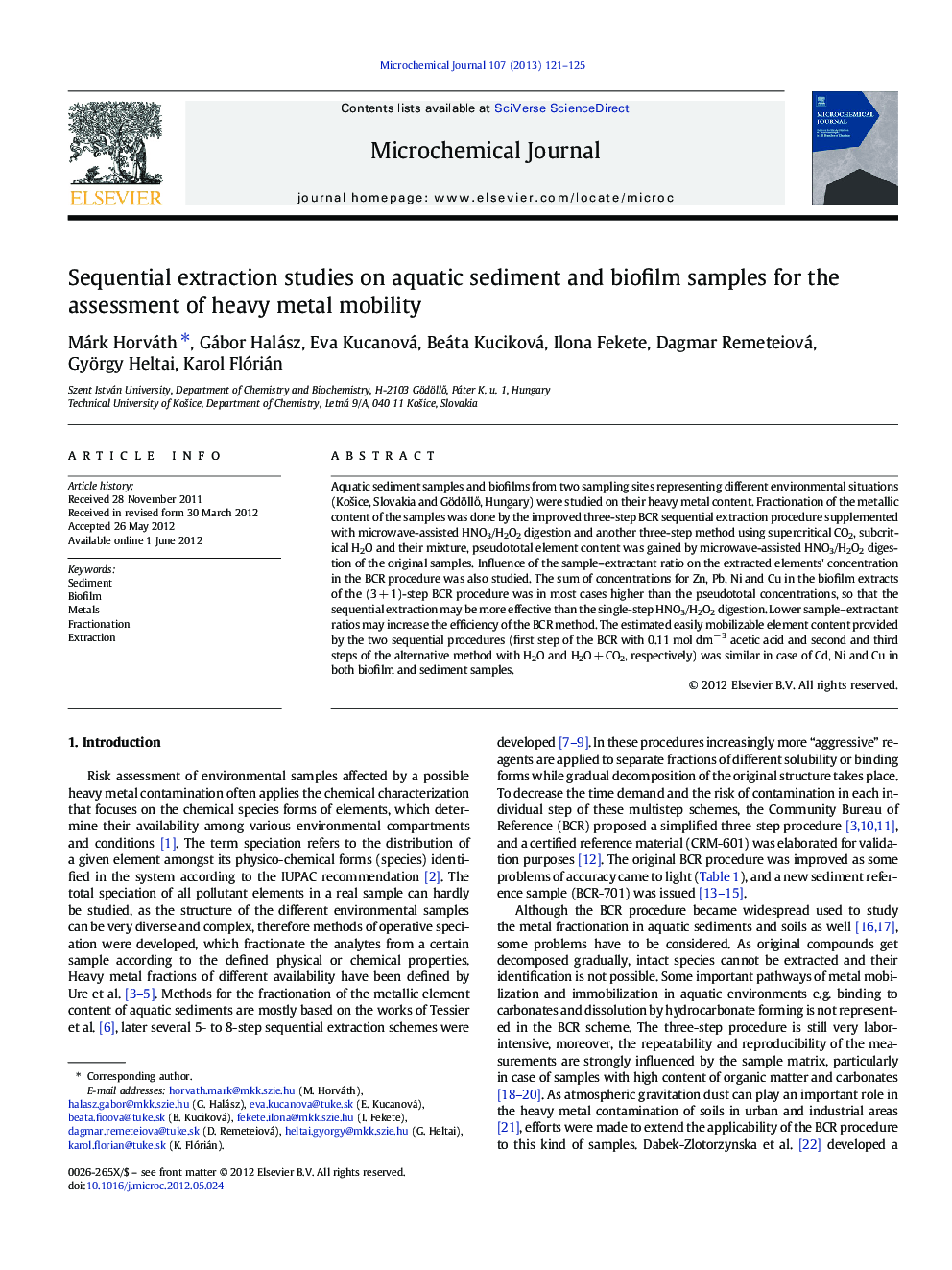| Article ID | Journal | Published Year | Pages | File Type |
|---|---|---|---|---|
| 1227865 | Microchemical Journal | 2013 | 5 Pages |
Aquatic sediment samples and biofilms from two sampling sites representing different environmental situations (Košice, Slovakia and Gödöllő, Hungary) were studied on their heavy metal content. Fractionation of the metallic content of the samples was done by the improved three-step BCR sequential extraction procedure supplemented with microwave-assisted HNO3/H2O2 digestion and another three-step method using supercritical CO2, subcritical H2O and their mixture, pseudototal element content was gained by microwave-assisted HNO3/H2O2 digestion of the original samples. Influence of the sample–extractant ratio on the extracted elements' concentration in the BCR procedure was also studied. The sum of concentrations for Zn, Pb, Ni and Cu in the biofilm extracts of the (3 + 1)-step BCR procedure was in most cases higher than the pseudototal concentrations, so that the sequential extraction may be more effective than the single-step HNO3/H2O2 digestion. Lower sample–extractant ratios may increase the efficiency of the BCR method. The estimated easily mobilizable element content provided by the two sequential procedures (first step of the BCR with 0.11 mol dm− 3 acetic acid and second and third steps of the alternative method with H2O and H2O + CO2, respectively) was similar in case of Cd, Ni and Cu in both biofilm and sediment samples.
► Aquatic sediment and biofilm samples were studied. ► Heavy metal content was fractionated by BCR method and CO2/H2O extraction. ► Influence of the sample–extractant rate on the efficiency in the BCR was studied.
